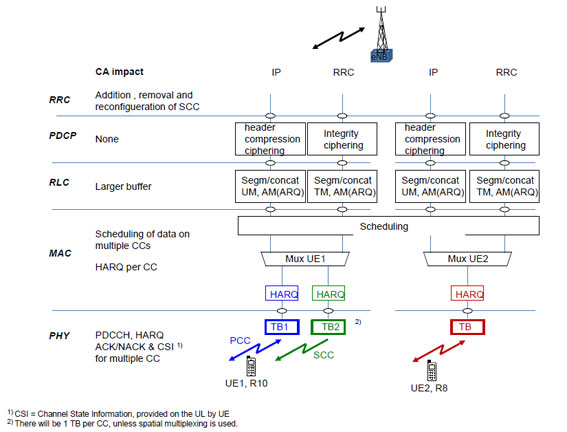Carrier Aggregation (CA) is used in LTE-Advanced in order to increase the bandwidth and increase the throughput. It can be used for both FDD and TDD.
Carrier aggregation (CA) allows a UE to simultaneous transmit and receive data on multiple component carriers from a single eNodeB.
Each aggregated carrier is called a component carrier, CC. The component carrier can have a bandwidth of 1.4, 3, 5, 10, 15 or 20 MHz and a maximum of 5 component carriers can be aggregated, hence the maximum aggregated bandwidth is 100 MHz.
However, in 3GPP Release 13, the maximum number of CC is 32 and for 5G NR 16.
LTE Protocol Stack Change

Carrier Aggregation (CA) impacts mainly MAC and the physical layer protocol, but also some new RRC messages are introduced.
However some changes are required, such as new RRC messages in order to handle SCC, and MAC must be able to handle scheduling on a number of CCs.
Major changes in the physical layer are for example that signaling information about scheduling on CCs must be provided DL, as well as HARQ ACK/NACK per CC, must be delivered UL and DL.
In CA implementation, user traffic is split between carriers in the MAC layer.
